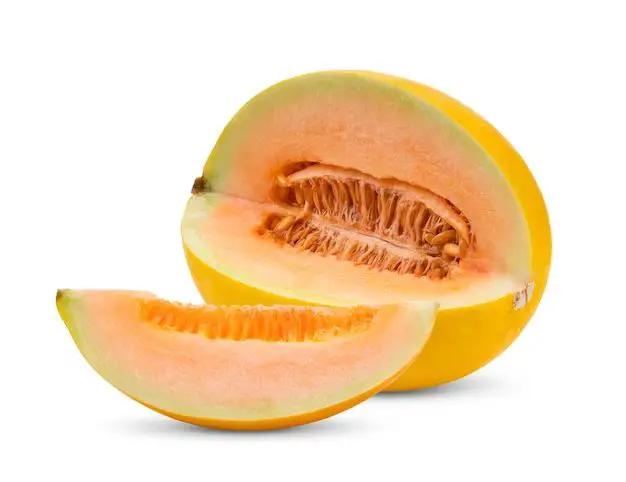Melon is a color that is often described as a pale orange or orange-tan color. However, categorizing colors can be subjective and melon’s classification as an orange shade is debated by some. In this article, we’ll examine the visual characteristics of melon and its relationship to the color orange to help determine if melon is truly an orange color or not.
Defining the Color Melon
Melon is considered a light tone of orange, close to the color of cantaloupe. It has a pale, soft appearance and lacks the vividness of true orange shades like orange-red. The first recorded use of “melon” as a color name in English was in 1892.
Some alternative names used to describe colors similar to melon are cantaloupe, honeydew and creamsicle. Melon falls in the orange-yellow color spectrum, exhibiting qualities of both orange and yellow. This places it between the web colors orange and light yellow on the traditional color wheel.
The RGB values for melon are R: 255, G: 187, B: 170. TheHEX triplet code is #FFBBAA. In print design, melon is represented as a CMYK color with values of C: 0%, M: 30%, Y: 40% and K: 0%.
Characteristics of Orange Colors
Orange is a bright, warm color situated between red and yellow on the color spectrum. It embodies the vividness of red and the cheerfulness of yellow.
True, pure orange colors have a hue angle of around 30 degrees on the color wheel. They possess strong red undertones and little to no yellowish quality.
Some characteristics of true orange hues are:
- High intensity and saturation
- Fairly low lightness – more vibrant than light tints
- Evokes feelings of excitement, warmth, and energy
- Often associated with autumn, citrus fruits, fire, sunsets
Orange has high visibility and is eye-catching. It advances visually, making it an energetic accent color. In design, orange conveys fun, youthful vibes.
Melon’s Relationship to Orange
Now that we understand the visual and psychological traits of true orange, we can better analyze how melon compares.
Color Intensity
Melon is significantly lower in color intensity than prototypical orange shades. It reads as muted and grayish rather than brilliant. This diluted, pale characteristic makes it diverge from the boldness of orange.
Hue
The hue of melon, residing between orange and yellow, gives it a distinct softened quality. While still in the orange family, melon skews a bit more towards yellow in hue than pure orange.
Lightness
Lightness is another differentiation between melon and orange. Orange is most vivid in moderate lightness levels. Melon is significantly lighter – it lacks the richer, deeper tones of true orange.
Psychological Associations
Melon’s muted, light traits give it much softer psychological associations than the high energy, enthusiasm and heat of orange. Melon reads as gentle, wistful and nostalgic rather than exciting.
Common Uses
Melon’s subdued nature makes it more fitting for backgrounds and accents than as a bold primary color like orange often is. It works nicely with other pastels and earth tones in a palette.
Comparing Melon and Orange
We can further illustrate the differences between melon and orange by looking at visual examples side-by-side:
| Melon | Orange |
|---|---|
Even with the table’s limited color accuracy, we can observe melon as being lighter, softer and less saturated than the true orange next to it.
Is Melon Considered an Orange Color?
There is no definitive authority on color classifications, so whether melon is labeled as an “orange” or not comes down to convention and personal interpretation.
With its significantly lower saturation and distinct shift towards yellow, many color experts would likely not classify melon as a pure orange. However, since it falls within the broad orange color range and retains some orange characteristics, it’s reasonable to describe it as an orange variety or offshoot.
Evidence Supporting Melon as Orange
- Resides on orange side of orange-yellow color spectrum
- Retains some qualities of orange – just very muted
- Commonly labeled an orange tone by paint companies, designers and color dictionaries
Evidence Against Melon as Orange
- Much lighter and grayer than prototypical oranges
- Hue leans closer to yellow than orange
- Psychological feel diverges from the excitement of orange
- Some color experts argue it’s too far removed from orange
Conclusion
Melon is generally considered an orange variety or offshoot despite having several distinctive characteristics separating it from more pure, vivid orange tones.
While melon exhibits a lighter, grayish quality and skews somewhat towards yellow, it originated as an orange shade and retains enough basic orange traits to fall under the broad orange umbrella, though perhaps not as a “true” orange.
Whether you classify it firmly as orange or not, there’s no denying melon has a soft, gentle personality all its own, distinct within the lively orange color family. Its uniqueness gives designers an airy, delicate option to work with.
Melon’s muted yet warm vibe aptly reflects its fruit namesake – the sweet, mellow flavor of cantaloupe melon. This pleasant association makes melon an appealing choice for backgrounds, accents, clothing, web design and many other applications.
So while the “is it orange?” debate continues, melon’s blend of orange-yellow qualities gives designers a versatile hue that stands apart from its more intense orange relatives.


